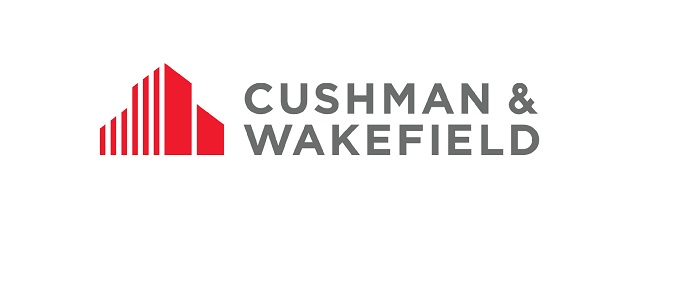Real Estate
New York’S Upper 5Th Av Remains World’S Most Expensive Retail Street

Iconic Manhattan street narrowly ahead of Causeway Bay in Hong Kong despite annual rental values decreasing in both
Paris’ Avenue des Champs Élysées third despite significant rental rise in London’s New Bond Street with Japan’s Ginza climbing into the top five
New York’s Upper 5th Avenue remains the world’s most expensive retail street, narrowly ahead of Hong Kong’s Causeway Bay, but rental values have decreased in both as brands balance the demands of physical and online presences, according to Cushman & Wakefield.
The annual Main Streets Across the World report tracks 462 of the top retail streets around the globe, ranking them by their prime rental value utilising Cushman & Wakefield’s proprietary data. Now in its 28th edition, the report also includes a ranking of the 71 most expensive streets – the top one per country. This year’s report showed that 36% of all streets analysed saw rental gains.
Upper 5th Avenue, which saw its first decrease in annual rents per square foot since the financial crisis, and Causeway Bay are both more than twice as expensive as the leading street in any other country.
Paris’ Avenue des Champs Élysées, where annual rents are $1,368 per square foot, is third, London’s New Bond Street is fourth ($1,283) with Tokyo’s Ginza leapfrogging into fifth place with annual rents totaling $1,249. Myeongdong in Seoul, which climbed one place to eighth, was the only other upwards mover in the top 10.
EMEA region
Paris’ Avenue de Champs Élysées retained its crown as the most expensive retail location despite a decline in tourist numbers and spend, which significantly contribute to the health of the retail sector. The French capital is home to five of the top most expensive high streets within the EMEA region.
Across the UK strong occupier demand for high street locations, many of which are suffering from limited available units, resulted in positive rent performance. This was particularly evident in London which saw some of the strongest rental growth across EMEA with retailers willing to pay a premium in order to secure sites and capitalise on healthy footfall figures. London’s New Bond Street – second most expensive street in EMEA – saw rents rise by 14.3% over the last 12 months, although this was outstripped by Covent Garden at 31.6% over the same period, followed by Sloane Street (27.3%).
Milan’s Via Montenapoleone recorded 20% growth over the year to June, solidifying its third position in the EMEA ranking, reaffirming the allure of the city for both mass market and luxury retailers.
Justin Taylor, Cushman & Wakefield’s, Head of Retail, EMEA, said: “Retailers are facing technological advances head on, with more and more brands opting to offer online sales alongside, not instead of, a physical presence. They are also raising the customer experience bar with leading examples including Primark’s new store in Madrid and Apple’s refitted store on Regent Street in London.
“Demand is strong for the right space in the right location and the lack of supply along the majority of Europe’s main thoroughfares is seeing rents rise further and expanding the boundaries of well-established streets. This is exemplified by growth seen in some of London’s premier streets including Bond Street and Oxford Street.”
Asia Pacific region
The Causeway Bay area in downtown Hong Kong retains the top spot in the region’s ranking as the most expensive shopping location. The downward pressure on rents is creating opportunity for some retailers looking to snap up units on prime pitches in good rental terms.
Elsewhere, China is facing stiff competition from the growing e-commerce market and the emerging trend is to partner with online-to-offline platforms in an attempt to capture these changing trends in consumer behaviour. In parallel, both retailers and landlords are raising the bar on the experience offered to consumers by expanding the food and beverage and leisure offerings.
Theodore Knipfing, Cushman & Wakefield’s, Head of Retail, Asia Pacific, said: “Retailers continue to be cautious in their store expansion across the region due to concerns including continued global economic instability, and we see this continuing well into 2017. When expansion does happen, the focus is typically on quality over quantity. All in all, despite the cautious outlook across the region, major international and regional retailers will have to eye overseas growth, as their respective domestic markets reach saturation point and investors demand results.”
Americas region
In the US, publicly-traded apparel chains remain under immense pressure from Wall Street to be more efficient and this has meant closing underperforming stores, cutting overheads and improving margins. This trend has particularly affected the high street and mall sectors in the U.S. and it will continue heading into 2017. There has also been slowing demand from global brands looking for flagship space in New York, with the few new entrants that there have been being extremely cautious in their site selection process.
Gene Spiegelman, Cushman & Wakefield’s Vice Chairman, Head of Retail Services, North America, said: “Throughout 2016 the Americas region has benefited from stable consumer spending that has been sustained by steady employment and lower energy prices. This is an enduring trend from 2015 that we forecast to continue into 2017.
“The larger question, for 2017 and beyond, will be the unrelenting rebalancing of sales origination – bricks and mortar versus e-commerce. The urban retail sector will continue to benefit from global brands seeking tangible connections with the consumer while the pressure will build upon enclosed malls and open air shopping centers to continually enhance their shopping experience and differentiate their market positions to maintain competitiveness in the continuous advancement of the ‘bricks and clicks’ model.”

















































